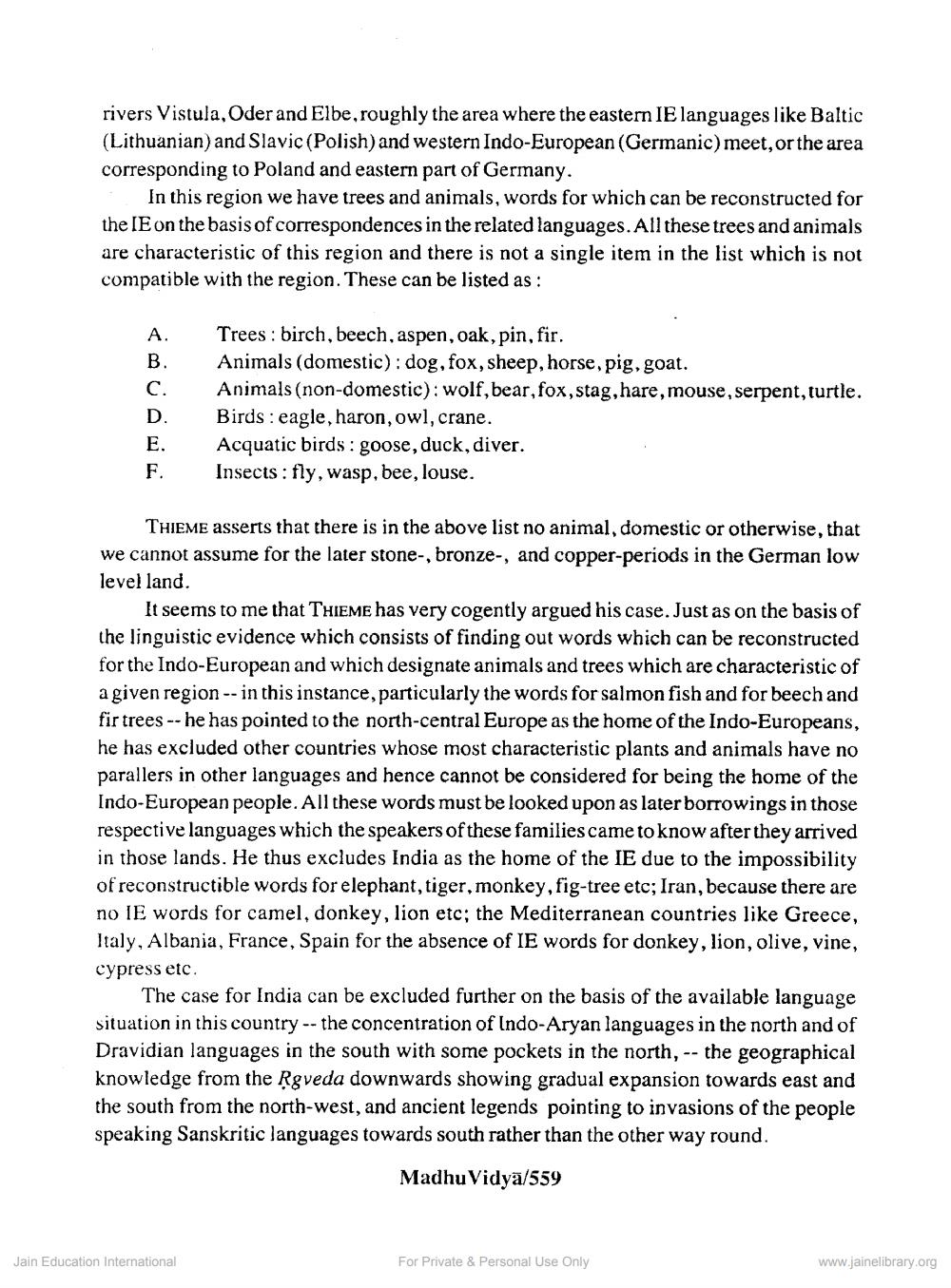________________
rivers Vistula, Oder and Elbe, roughly the area where the eastern IE languages like Baltic (Lithuanian) and Slavic (Polish) and western Indo-European (Germanic) meet, or the area corresponding to Poland and eastern part of Germany.
In this region we have trees and animals, words for which can be reconstructed for the IE on the basis of correspondences in the related languages. All these trees and animals are characteristic of this region and there is not a single item in the list which is not compatible with the region. These can be listed as:
Trees : birch, beech, aspen, oak, pin, fir. Animals (domestic): dog, fox, sheep, horse, pig, goat. Animals (non-domestic): wolf, bear, fox,stag, hare, mouse, serpent, turtle. Birds : eagle, haron, owl, crane. Acquatic birds : goose, duck, diver. Insects : fly, wasp, bee, louse.
D. E. F.
THIEME asserts that there is in the above list no animal domestic or otherwise, that we cannot assume for the later stone-, bronze-, and copper-periods in the German low level land.
It seems to me that THIEME has very cogently argued his case. Just as on the basis of the linguistic evidence which consists of finding out words which can be reconstructed for the Indo-European and which designate animals and trees which are characteristic of a given region -- in this instance, particularly the words for salmon fish and for beech and fir trees -- he has pointed to the north-central Europe as the home of the Indo-Europeans, he has excluded other countries whose most characteristic plants and animals have no parallers in other languages and hence cannot be considered for being the home of the Indo-European people. All these words must be looked upon as later borrowings in those respective languages which the speakers of these families came to know after they arrived in those lands. He thus excludes India as the home of the IE due to the impossibility of reconstructible words for elephant, tiger, monkey,fig-tree etc; Iran, because there are no IE words for camel, donkey, lion etc; the Mediterranean countries like Greece, Italy, Albania, France, Spain for the absence of IE words for donkey, lion, olive, vine, cypress etc.
The case for India can be excluded further on the basis of the available language situation in this country -- the concentration of Indo-Aryan languages in the north and of Dravidian languages in the south with some pockets in the north, -- the geographical knowledge from the Rgveda downwards showing gradual expansion towards east and the south from the north-west, and ancient legends pointing to invasions of the people speaking Sanskritic languages towards south rather than the other way round.
Madhu Vidyā/559
Jain Education International
For Private & Personal Use Only
www.jainelibrary.org




